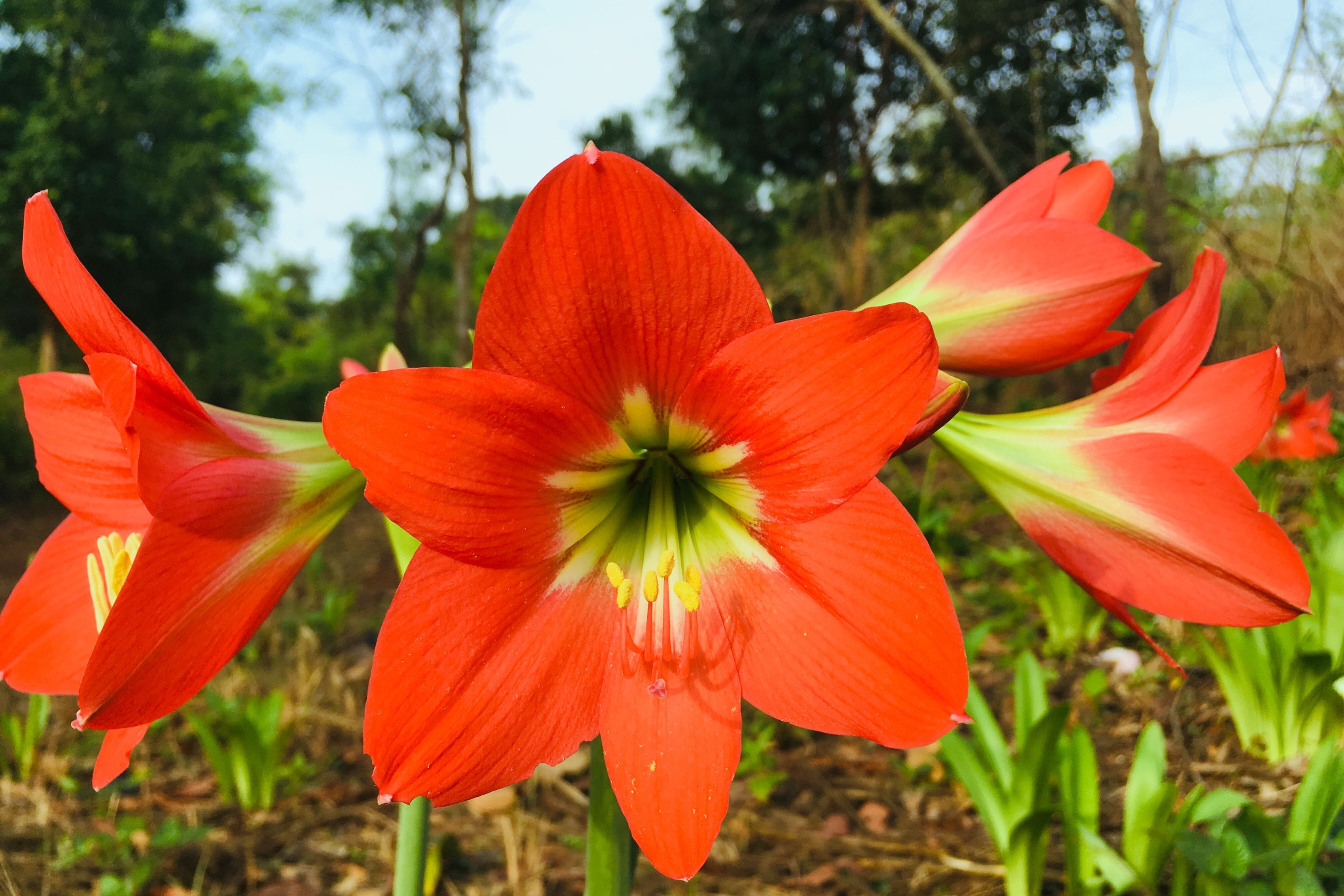Easter lily
(Hippeastrum puniceum)

Description
Hippeastrum puniceum is a bulbous perennial native to tropical regions of South America, although it has become naturalized elsewhere. Common names include Barbados lily, Easter lily, cacao lily, cocoa lily and amaryllis lily, although it is neither a lily nor a species of Amaryllis. Plants have 4–6 leaves, each of which is bright green, 30–60 cm long by 2.5–3 cm wide, strap-shaped (lorate) and tapers at the end to an acute apex. The leaves are not fully developed when the flowers appear (i.e. they are more or less hysteranthous). The flowers are borne in an umbel on a stem (scape) which is 40–60 cm tall. The umbel has lanceolate green bracts at its base. The petals, or more accurately tepals, are orange-red with paler bases. The lower two tepals are much narrower than the lateral ones. Most Hippeastrum bulbs are tunicate (a protective dry outer layer and fleshy concentric inner scales or leaf bases). The bulbs are generally between 5–12 cm (2"–5") in diameter and produce two to seven long-lasting evergreen or deciduous leaves that are 30–90 cm (12"–36") long and 2.5–5 cm (1"–2") wide. The leaves are hysteranthous (develop after flowering), sessile (borne directly from the stem or peduncle), rarely persistent and subpetiolate. The flowers are arranged in umbelliform inflorescences which are pauciflor or pluriflor (2-14 flowers), supported on an erect hollow scape (flower stem) which is 20–75 cm (12"–30") tall and 2.5–5 cm (1"–2") in diameter with two free bracts forming a spathe which is bivalve with free leaflets at its base. Depending on the species, there are two to fifteen large showy flowers, which are more or less zygomophic and hermaphrodite. Each flower is 13–20 cm (5"–8") across, and the native species are usually purple or red. They are funnelform (funnel shaped) and declinate (curving downwards and then upwards at the tip) in shape. The perianth has six brightly colored tepals (three outer sepals and three inner petals) that may be similar in appearance or very different. The perianth segments are subequal or unequal. The tepals are united at the base to form a short tube, usually with a rudimentary scaly paraperigonium with fimbriae or a callose ridge present at the throat.
Taxonomic tree:







